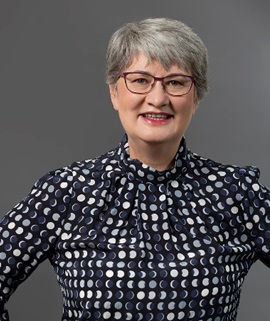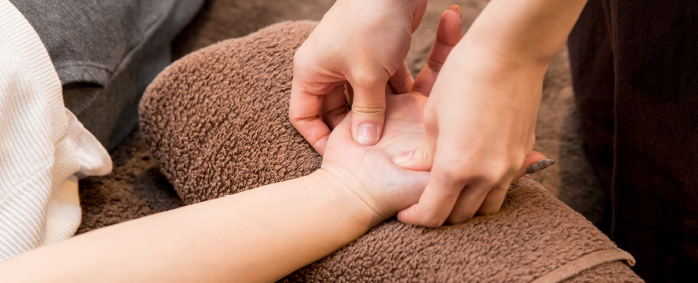A guide to marketing your practice
- Blog
- A guide to marketing your practice

Most practitioners will tell you that word of mouth is the best way to grow your business, that’s great but how do you build word of mouth as a new practitioner? Building a community of passionate advocates for your business is the desirable outcome for your marketing, so in this blog we will look at three ways you can build a client base and ultimately develop “word of mouth”.
Website
The very first thing you need to do once you graduate and decide to start your own practice – set up a website. This is non-negotiable. Just think about how you find a business when you need one? Chances are the first thing you do is search on Google to find a business in your local area. If you do not have a website you won’t appear in the simplest search your clients are doing – but other practitioners will.
A recent Sensis report on social media[1] use, it was highlighted that 79% of Australians use the internet and 49% of those users access social media every day. Users were accessing the following forms of social media:
- Facebook 93%
- LinkedIn 28%
- Instagram 26%
- Google+ 23%
- Pinterest 17%
- Twitter 17%
Your website needs to answer five simple questions. Who are you? Where are you? Why should I see you? When are you available? Why should I see you in preference to another practitioner? In essence, it is a flyer for your business and needs to answer all these questions to make it easy for a client to see that you do meet their needs and further, that they need to make an appointment with you. You may want to do a print flyer as well with similar information to leave at local businesses.
Social Media
The second area that can help build a community of supporters for your business is social media. Decide where your target market is on social media and look at two forms that you can use. This could include Linkedin, Facebook, Twitter, Instagram, Google+ or Pinterest. For most practitioners that means at a minimum a Facebook Business Page for your clinic.
Social Media News reported in April 2017[2] that there are currently 17 million users of Facebook, 5 million Instagram users, whereas LinkedIn has 4.0 million users and Twitter 3.0 million.
Different types of social media work better for different types of practices. For example Instagram and Pinterest work well for more visual practices, whether it’s sharing recipes or photos of meals or inspirational pictures. Simple Green Smoothies is a great Instagram account to follow for anyone interested in nutrition. Lots of amazing smoothie recipes and beautiful pictures, the vision is to get people to fall in love with kale and spinach.
LinkedIn is a good channel for people who want to access clients who can afford their services as this is an area where executives tend to be listed. Ideally material posted in this arena would be pitched to this market, short and relevant. LinkedIn would suit practitioners who are working in and around the CBD of a major city. LinkedIn has its own built in blog available which can be an easy way to setup in this area.
Networking
Building a successful practice means developing networks. This could be through existing networks such as sporting clubs or other interests or through an appropriate business networking group. There are many different options and it may depend on your location, however what you need is groups where you can build personal relationships, not just hand out business cards. Look at groups such as Rotary, BNI or your local Chamber of Commerce. The advantage of a networking group is that you can develop a group of advocates for your business, people who really understand what you do and how you can help, who can help you promote and grow your business.
Ideally join at least one regular group and look for a “stretch” event monthly which gives you a chance to meet with other business owners in the area. This could include business training or other community events.
Networking within your own industry is also critical. Meeting all the local practitioners when you first set up practice not only provides you with a referral network but over time assists in building a group of practitioners who may refer back to you. Within my own practice at least 30% of referrals come from other practitioners. Ideally you should always track where clients are referred from and acknowledge the referral with a short note or card.
Offering to speak or providing regular workshops is also a good way to build your client base. Frequently it gives potential clients an easy way to meet you and assess whether you could work together without committing to an initial appointment.
Marketing Plan
Looking at all these suggestions may start to become a little overwhelming so break it down into a daily, weekly or monthly task list. For example Monday could be schedule your social media posts, Tuesday meet another practitioner in the area for a coffee and the first Thursday of the month might be a day for attending a local networking event. The secret with marketing is that you need to be consistent and even when you are busy it’s important to keep doing it to generate new clients.
[1] https://www.sensis.com.au/about/our-reports/sensis-social-media-report
[2] https://www.socialmedianews.com.au/social-media-statistics-australia-april-2017/
More about the author

Christine Pope - ATMS Life Member
Christine runs a regular workshop for ATMS on Using Social to Build Your Business and also has her own clinical practice, Elemental Health at St Ives in Sydney. She holds both a Bachelor of Commerce and a Bachelor of Heath Sciences in Complementary medicine and regularly attends training workshops on social media.


